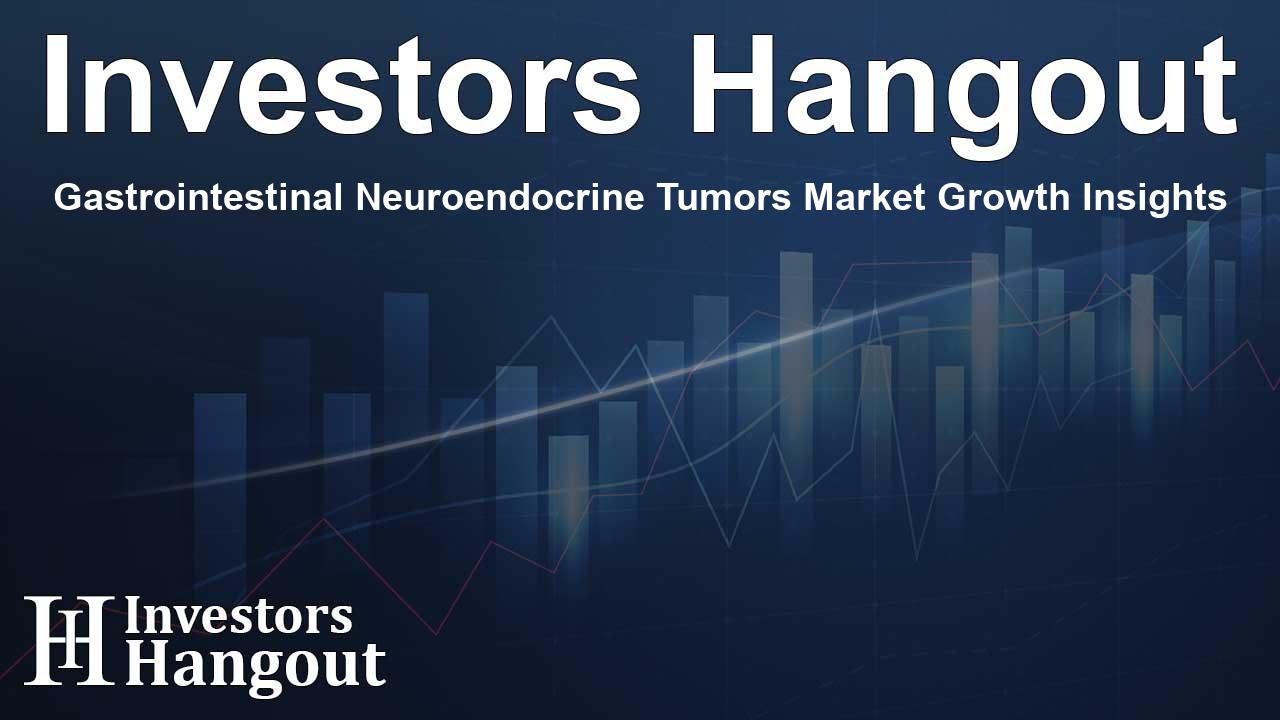Gastrointestinal Neuroendocrine Tumors Market Growth Insights

Growth Drivers in the Gastrointestinal Neuroendocrine Tumors Market
The gastrointestinal neuroendocrine tumors (GI-NET) market is showing a dynamic upward trajectory, largely fueled by a combination of increased cases, innovative diagnostic tools, and heightened awareness regarding targeted therapies. This market is being invigorated by notable investments in research and development. The arrival of groundbreaking treatments such as ITM-11, CAM2029, and RYZ101 is anticipated to be pivotal in propelling the growth of this market.
Market Summary and Emerging Trends
Recently compiled insights regarding the GI-NET market shed light on promising forecasts. Analysts predict significant growth in market size across major regions by 2034, driven primarily by advancements in treatment modalities. Notably, the United States accounted for the largest market segment in 2024, reflecting the highest number of reported GI-NET cases, estimated at around 15,500. This number is expected to rise, indicating a clear trend of increasing incidence.
Emerging Treatment Options
Several leading companies are dedicating resources to develop transformative therapies. Innovative drugs currently under investigation include ITM-11 (which uses lutetium-177 to target tumor cells), CAM2029, and RYZ101. These treatments promise to improve the landscape of therapeutic options available for patients suffering from gastrointestinal neuroendocrine tumors.
Key Factors Accelerating Market Expansion
Rising Incidence and Need for Advanced Diagnostics
The persistence of rising incident cases within the U.S. and globally is contributing significantly to the market’s growth. Enhanced imaging technologies and diagnostic capabilities are enabling earlier detections, thus significantly improving patient outcomes and reinforcing market dynamics.
Innovations in Treatment Approaches
Next-generation therapies like ITM-11 are at the forefront of changing the GI-NET treatment paradigm. These therapies utilize targeted radiation to improve the management of neoplasia. This shift towards biologically-informed treatment protocols signals a transformative era in patient care, focusing on personalized medicine.
Competitive Landscape of the GI-NET Market
The competitive landscape is characterized by numerous companies contributing to the development of GI-NET therapies. Key players like ITM Solucin GmbH and Bristol Myers Squibb are essential for fostering collaboration and innovation. Early-stage trials suggest these therapies could pave the way for enhanced treatment success rates, directly impacting market dynamics.
Recent Developments Influencing the Market
Recent events have highlighted the swift advancements in the GI-NET field. Clinical trials showcasing the efficacy of newer therapies have underscored the promise these medications hold. Participants in clinical trials show optimism about the outcomes, bolstering interest among stakeholders and investors alike.
Understanding Gastrointestinal Neuroendocrine Tumors
GI-NETs represent a unique subclass of neuroendocrine tumors, typically originating in the gastrointestinal tract. Symptoms may range from abdominal discomfort to more severe manifestations like weight loss or fatigue, prompting the need for effective treatments. Understanding this illness is crucial, as these tumors can exhibit various growth patterns, affecting staging and treatment protocols.
Epidemiology and Forecasting Trends
Studies forecast that the incidence of GI-NET will continue to rise, with an emphasis on understanding patient demographics, tumor characteristics, and treatment responses. By studying these factors, stakeholders will be better equipped to anticipate market needs and trends. Segment analyses will shed light on how specific treatments perform across various populations.
Challenges and Future Opportunities
Despite advancements, challenges remain in thoroughly addressing aggressive cases of NETs or those resistant to existing therapies. Future research endeavors are critical to unlocking greater efficiency and safety in treatments. The insights gained in understanding this complex tumor group will help navigate the evolving landscape of GI-NET treatment.
Frequently Asked Questions
What factors are driving growth in the GI-NET market?
The growth is primarily driven by the increasing prevalence of GI-NETs, advancements in diagnostic capabilities, and the launch of innovative therapies.
What are the leading companies in the development of GI-NET therapies?
Companies like ITM Solucin GmbH, Bristol Myers Squibb, and Camurus are at the forefront of developing new therapeutic options for GI-NETs.
How significant is the incidence of GI-NETs?
The total number of GI-NET cases reported in the U.S. is projected to rise significantly, indicating an increasing need for effective therapies.
What emerging therapies show promise for GI-NET treatment?
Emerging therapies such as ITM-11, CAM2029, and RYZ101 show promising results in clinical trials focused on enhancing patient outcomes.
What are the main challenges faced in treating GI-NETs?
Challenges include effectively managing aggressive variants and those resistant to first-line treatments, underscoring the need for continued research.
About The Author
Contact Addison Perry privately here. Or send an email with ATTN: Addison Perry as the subject to contact@investorshangout.com.
About Investors Hangout
Investors Hangout is a leading online stock forum for financial discussion and learning, offering a wide range of free tools and resources. It draws in traders of all levels, who exchange market knowledge, investigate trading tactics, and keep an eye on industry developments in real time. Featuring financial articles, stock message boards, quotes, charts, company profiles, and live news updates. Through cooperative learning and a wealth of informational resources, it helps users from novices creating their first portfolios to experts honing their techniques. Join Investors Hangout today: https://investorshangout.com/
The content of this article is based on factual, publicly available information and does not represent legal, financial, or investment advice. Investors Hangout does not offer financial advice, and the author is not a licensed financial advisor. Consult a qualified advisor before making any financial or investment decisions based on this article. This article should not be considered advice to purchase, sell, or hold any securities or other investments. If any of the material provided here is inaccurate, please contact us for corrections.
